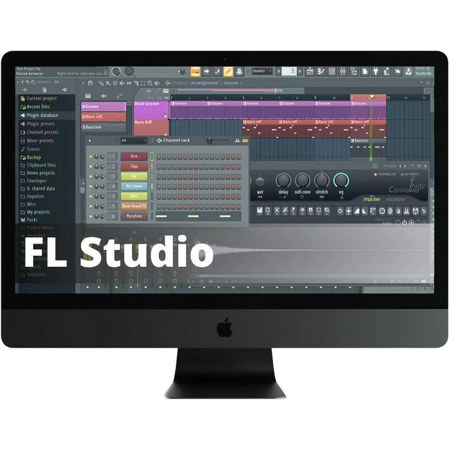





Need help? Ask our experts.
Review Summary
Accidents happen where life happens. Protect your favorite Adorama products and purchase a protection plan to stay covered from accidental damage, mechanical or electrical failure, and more.
If we can’t fix it, we’ll replace it at no additional cost.
Protect your product from drops, spills, and more.
Enjoy your gear without fear. We have you covered!
When regular use of your product over time results in mechanical or electrical failure.
We will never charge you a deductible after the purchase of a plan.
Our claims process is simple & easy and our customer service team is happy to help.
Adorama Protect powered by Extend is available for purchase to customers in the United States. Not available for purchase Internationally or in U.S. Territories.
Browse our FAQ
Online Access
Image Line FL Studio 20
Mac, PC
Learning how to record and produce professional sounding tracks in FL Studio has never been easier thanks to the FL Studio 20 Video Tutorial.
ProAudioEXP.com's David Wills spends over 2 hours walking you through every feature of FL Studio's workflow from setting up your software to work with your audio interface and MIDI controllers to creating radio-ready mixes and everything in between. DAWs 101 is a module in the training that uses easy to understand animations to teach you how a DAW works and how to use subgroups, EQ, Compression, Effects, Automation...everything you'll need to know so you can produce incredibly professional sounding tracks in FL Studio.
Includes
Introduction
• Pattern Based DAW
• Overview of FL Studio
• Detached Panels
• Overview of Panes
• Channel Rack
• Recording in Step Sequencer
• Help System/Hint Panel
DAWs 101
• What is a DAW?
• What do DAWs do?
• Types of Tracks
• MIDI Tracks
• Audio Tracks
• Types of Editing
• Mixers
• Effects Routing
• Automation
• Mixing Down
Setting Up
• Setting Up Audio Interface
• Buffer Length (Latency)
• Setting up a MIDI Controller
• Testing with a MIDI Device
• Browse Panel
• Browsing Examples
• Review
Recording
• Using Project Templates
• Understanding Patterns
• Understanding the Channel Rack
• Recording Drums in Step Sequencer
• Using the Graph Editor
• Setting the Length of the Step Sequencer
• Swing Setting
• Recording a Bass Part
• Recording in the Piano Roll
• Editing in the Piano Roll
• Painting in Notes
• Stamping in Chords
• Quick Legato
• Advanced Editing Tricks
• Strumming Notes
• Arpeggiator
• Riff Machine
• Programming Drums with FPC
• Using FPC Patterns
• Adding a Bass Part
• Selecting Parts
• "Ghost" Channels
• Adding a Realtime Synth Part
• Grid Snapping
• Quantising
• Muting/Soloing Parts in Channel Rack
• Splitting Parts in Patterns
• Placing Patterns in Arrangements
• Recording Vocals in Arrangements
• Vocal Comping
• Vocal Editing
• Recording Review
Editing
• Editing Drums in Piano Editor
• Transposing Notes
• Adjusting Velocities
• Editing Patterns
• Cloning Patterns
• Cloning Arrangements
• Using Markers
• Tempo Changes
• Audio Editing
• Audio Editing in Edison
Mixing
• Mixer Overview
• Mixer Views
• Assigning Channels to Inserts
• What can you do with the Mixer?
• EQ
• Resetting Mixer Inserts
• Controlling Multiple Inserts
• Resetting Mixer Parameters
• Using Effect Plugins
• Grouping Inserts
• Organizing the Mixer
• Sharing Effects across Inserts
• Docking Mixer Inserts
• Mixer "Housekeeping"
• Reverse Engineering a Demo Mix
• Understanding Automation
• Creating Automation Clips
• Mixer Presets
• Dropping in Mastering Effects
• Mixing down your Song
Graduation!